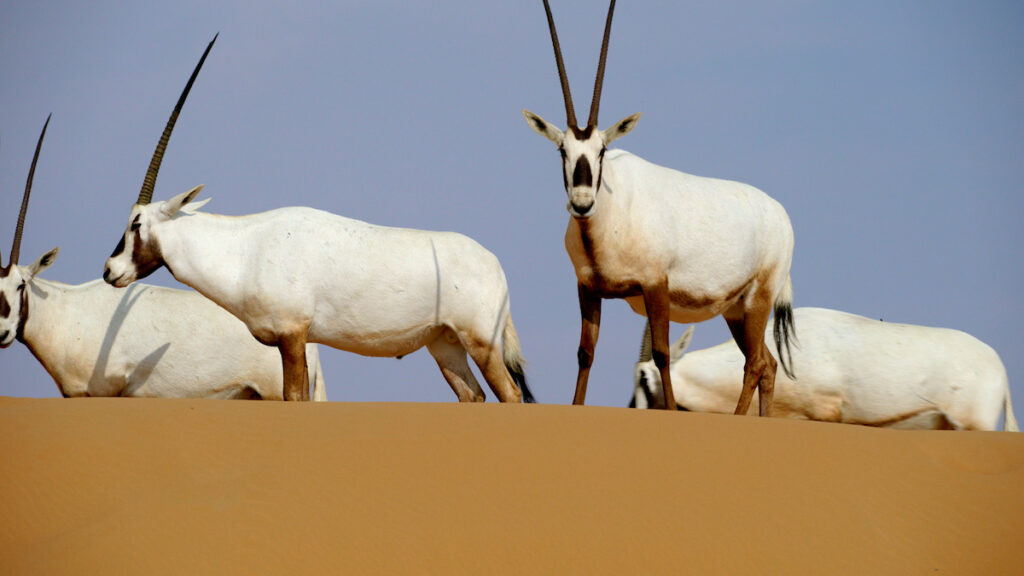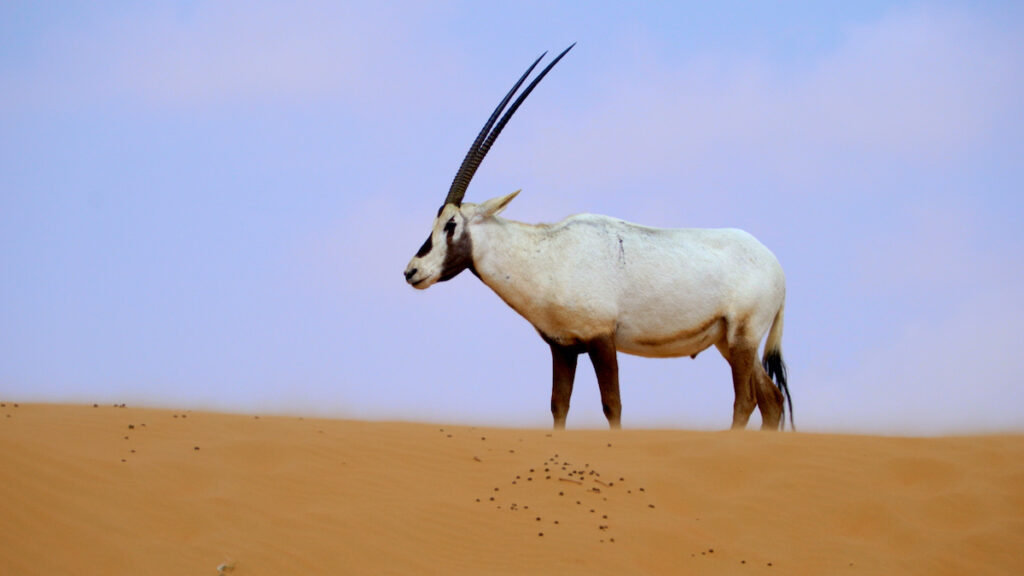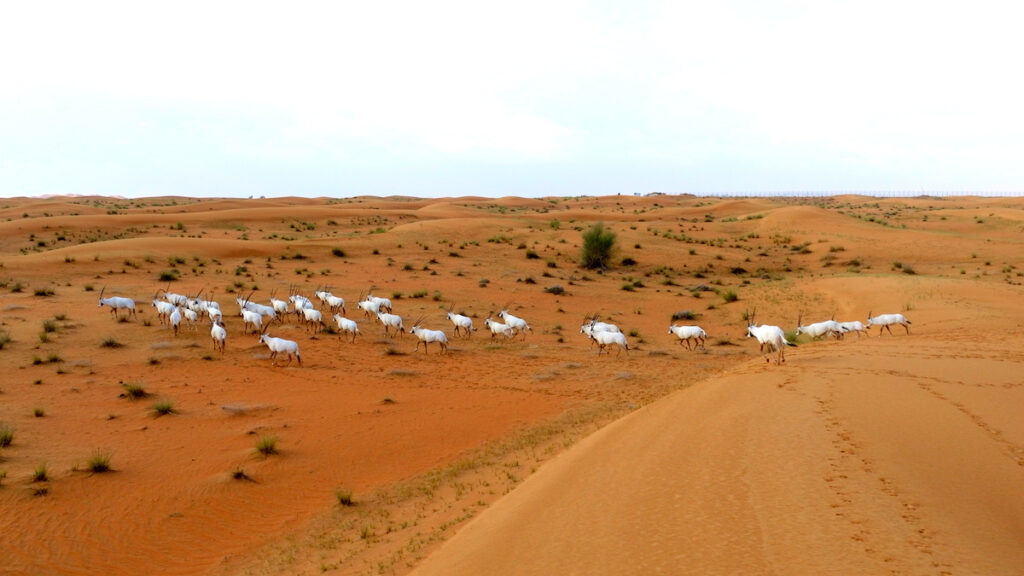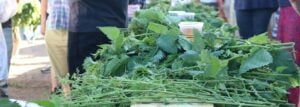This striking creature is one of the symbols of the Arabian Peninsula, but it was nearly lost for good. As recently as the 1970s, the Arabian Oryx was declared extinct in the wild. But decades of work has seen the steady increase of oryx populations, with the Dubai Desert Conservation Reserve leading the way.
A number of factors came together to drive the Arabian Oryx to the brink of extinction. Modern vehicles, expanding roads, more powerful weapons and a growing global surge in poaching all combined to eradicate the oryx from the wild. After the final one was shot in Oman in 1972, the species was officially declared extinct in the wild. The only Arabian Oryxes left in the world either lived in zoos or in private collections.
Until this point, no animal had ever been rescued from extinction in the wild. A mission to make the Arabian Oryx the first was launched. It was called Operation Oryx.

The unlikely site for phase one of the plan was Phoenix, Arizona. A number of remaining oryxes were taken to Phoenix Zoo and placed under incredibly strict control measures. They started a pioneering breeding program and by the mid-1970s, the population was successful enough that they could expand Operation Oryx to other zoos, and by the early 1980s, a small number of Arabian Oryx were reintroduced to their natural habitat.
Best known for their striking horns, earning themselves the nickname “Unicorn of the Desert”, these are just one of the features that help the Arabian Oryx survive in some of the world’s most challenging conditions. Their white coats reflect the beating desert sun, wide hooves help them move across the sand and they can go over two months without drinking water. They also have something known as a “wonder net” – a series of veins and arteries running through the nose and cooling down oryx’s blood and brain, giving them a resting temperature of between 3°C and 4°C.

Their adaptability and endurance meant the oryx was revered for centuries by different cultures on the peninsula. Oman, Bahrain and the United Arab Emirates all have the Arabian Oryx as their national animal, and each have developed fresh populations of their own in the last four decades. In fact, the animal is now found in ten different countries in the region, with the wild oryx now totaling over 1,000 and thousands more living in wildlife reserves and open-air centers ensuring the oryx thrives.
Read More: When 76 beavers parachuted into Idaho
The Dubai Desert Conservation Reserve is one of these sites. Built on land that was previously disturbed and farmed extensively, it is now stripped back and the land’s natural vegetation is again thriving, providing a natural, controlled environment that hundreds of oryxes call home. Gerhard Erasmus is the manager of the site, and he leads a team providing a blueprint of how oryx populations could be managed in the coming years, looking to wean the species off the supplemental feeding in as few as five years.

Arabian Oryxes are now classified as“vulnerable”, rather than “extinct”, but the IUCN Red List of Threatened Species still says it has a high risk of extinction in the wild. It means technologies are still being developed to protect the species, including a recent world-first decoding of the DNA of a vulnerable species. The achievement was completed by an international team, led by the University of Sydney, and it will allow genetic data to inform future oryx breeding programs in the future.
As the first species brought back from the brink, the successful reintegration of the Arabian Oryx has had a lasting impact. “It was a species to show to everybody,” Gerhard Erasmus says, “to show all conservations, to show all natural enthusiasts, that this is what we can do if we really put our minds to it. If you dedicate a piece of land to a specific species, we can conserve them, we can actually save them.”






1 Comment
Loved this article, what fascinating animals!